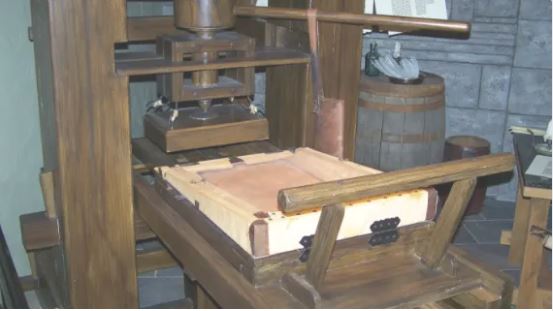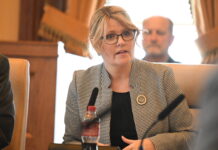Cancel culture has a long history. The false prophets of Israel wanted the true prophets silenced. Jezebel murdered hundreds of them. Obadiah hid those who had escaped her wrath. There were many attempts to silence Jesus. It was fear of the people that kept the antagonists away. The religious leaders used political accusations as false testimony to bring the Roman government into canceling Jesus permanently.
Paul and his religious cohorts murdered Stephen after he recounted Israel’s redemptive history and called them to account (Acts 7:54–8:1–3). The canceling continued throughout the history recorded in the book Acts and recounted by Paul in what happened to him personally (1 Cor. 11:20–28).
Before the Reformation, access to the Bible in the vernacular of the people was hard to come by. If you didn’t read Latin, God’s Word was translated and interpreted for you by a religious hierarchy that protected their positions. Attempts to translate the Bible into English met with severe opposition. “In England, it was forbidden to translate the Bible into a vernacular language. Tyndale had to take his English translation of the New Testament to Cologne [in western Germany] to have it printed, but his endeavor was uncovered and he was forced to halt the printing and flee.” Why Cologne? “Printers were known to turn a blind eye and deaf ear to the material they were asked to print if the profit margin were sufficient.”[1] Tyndale did not let cancel culture cancel him. There are ways around the gatekeepers.
We are not at the point in the United States where Christians are strangled and burned at the stake because of our views. We have many ways to subvert the choke points. Compared to how we are living post-Reformation, we reside in a Christian utopia compared to the 1572 St. Bartholomew’s Day Massacre. There are churches on every corner. We can publish almost any book or newsletter we want. There are alternatives to Amazon, Facebook, and Google. We can still use these information transmission belts to our advantage. Instead of whining, lamenting with a “woe is us” perspective, or claim we are living in the last days as a form of escape from duty, we should be about building a Christian counter-culture to be the main culture. We still have the freedom to educate our children. If we aren’t willing to do that much when there is no opposition to it, we won’t be willing to do much else if things get worse. And don’t tell me that having lots of guns and ammunition is going to make a difference.
The following is from Otto J. Scott’s article “Tactics of Resistance Used by the Protestant Reformers” that was first published in Tactics of Christian Resistance, volume 3 of Christianity and Civilization edited by Gary North and James Jordan (1983). As you read the following, keep in mind that you are reading it electronically via something called the Internet that has a global reach.
______________________________________
It was the accidental sight of a copy of one of Gutenberg’s Bibles in the library of the convent of Erfurt, where Luther was in training for a monk, that fixed his destiny for life. “I was twenty years old,” he said later, “before I had even seen the Bible. I had no notion that there existed any other gospels or episodes than those in the service….”[2] “He opened it and read with inexpressible delight the history of Hannah and her son Samuel. Oh God!” he murmured, “could I but have one of these books, I would ask no other treasure!” “A great revolution forthwith took place in his soul. …”[3]
Prior to printing, hand-copied Bibles belonged to the clergy and were seldom seen or read by others. The printers, who were generally not university men but men who had learned, or made themselves learn, different languages in order to make a living, had to copy edit, which in itself created divisions and argument. Bibles began to appear in the vernacular, despite Church prohibitions and regulations that led to arrests, tortures, and even death. A civilization long accustomed to the idea that there is only one truth was riven by multiple expressions. The natural result was enormous intellectual turbulence and a quickening of discontent with the tawdriness of the Renaissance and the corruption of the Church on the part of younger Humanist scholars.
When Luther listed his Ninety-Five Theses, his agenda for a debate, he was acting well within scholarly conventions and customs. He wrote his Theses, after all, in Latin, and not for the masses. Yet they created an enormous international stir, and Luther — six months later, writing to the Pope expressed amazement. “It is a mystery to me how my theses, more so than my other writings, indeed, those of other professors were spread to so many places. They were meant exclusively for our academic circle here … they were written in such language that the common people could hardly understand them. They … use academic categories….”[4]
The answer, according to a fascinating monograph, is that the printers translated Luther’s writings into German at first “and then into other vernaculars. How did it happen that, soon after being printed in a handful of towns, such as Nuremberg, Leipzig, and Basel, copies were multiplied in such quantities and distributed so widely that the Theses won top billing throughout central Europe — competing for space with news of the Turkish threat in printshop, bookstall, and country fair?”[5]
The “academic circle” to which Luther referred was greatly expanded after the printing appeared. “The scholarly printer who presided over the new centers of erudition was usually a layman and rarely had a college degree. Although it was closer to commercial crossroads than to cloistered precincts, the printer’s workshop attracted the most learned and disputatious scholars of the day.”[6]
Eisenstein cites a letter “from Beautus Rhenanus to Zwingli in 1519…. He will sell more of Luther’s tracts if he has no other to offer, Zwingli was told by Beautus in a letter recommending a book peddler.”[7] By these hard-sell methods, 300,000 copies of Luther’s thirty publications were sold between 1517 and 1520 … at a time when print had the power of a thunderclap. “For the first time in human history a great reading public judged the validity of revolutionary ideas through a mass-medium which used the vernacular languages together with the arts of the journalist and the cartoonist.”[8]

Restoring the Foundation of Civilization
There are many Christians who will not participate in civilization-building efforts that include economics, journalism, politics, education, and science because they believe (or have been taught to believe) these areas of thought are outside the realm of what constitutes a Christian worldview. Nothing could be further from the truth.












